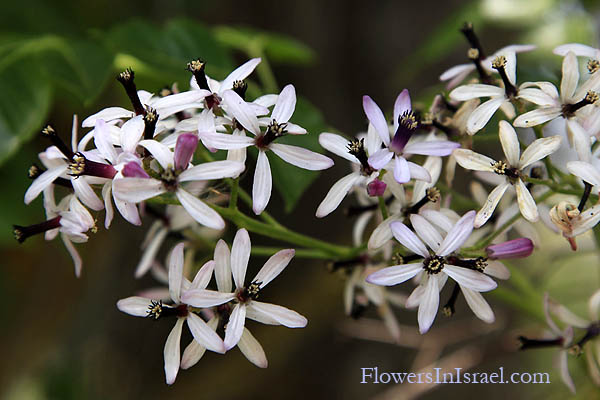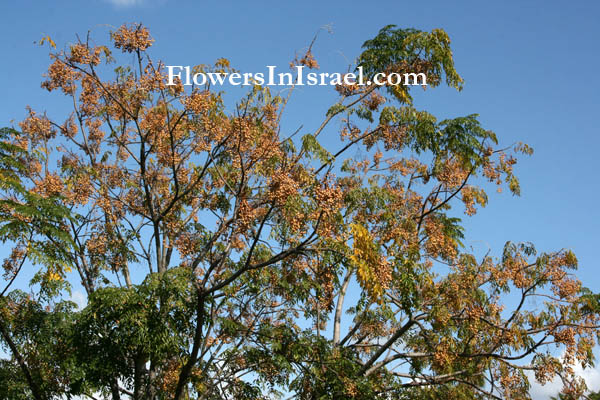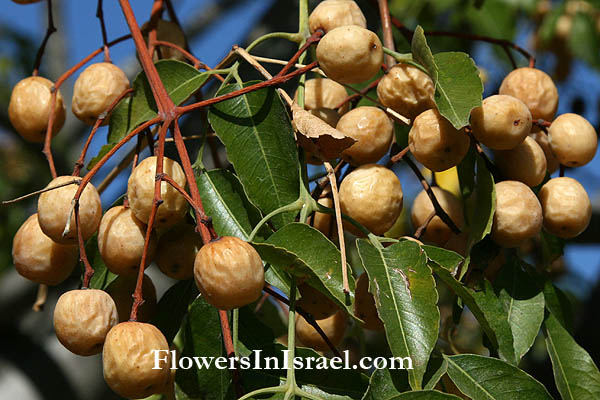Syringa berrytree, Bead Tree,
Hebrew: אזדרכת מצויה, Arabic: أزادرخت
| Scientific name: | Melia azedarach L. | |
| Synonym name: | Melia australis Sweet, Melia G. Don, Melia sempervirens Kuntze | |
| Common name: | China tree, Margosa tree, Persian Lilac, White Cedar, Chinaberry, Syringa berrytree, Bead Tree | |
| Hebrew name: | אזדרכת מצויה | |
| Arabic name: | أزادرخت ,Azadarkhat | |
| Family: | Meliaceae, Mahogany family, אזדרכתיים |

Location: Hula Nature Reserve |
| Life form: | Tree | |
| Stems: | Up to 12m at maturity, a sreading crown; bark, brown to slightly reddish brown, splitting into slightly criss-crossing furrows | |
| Leaves: | Alternate, compound, bipinnate or more, dentate or serrate | |
| Inflorescence: | Axillary panicle up to 20 cm long, loose long clusters of violet flowers | |
| Flowers: | sepals 5-lobed, 1 cm long; petals 5-lobed, 0.9 cm long, pubescent; staminal tube deep purple blue, 0.5 cm long, 1 cm across | |
| Fruits / pods: | Drupe, round, 1.5cm in diameter, in hanging clusters, fleshy, light yellow at maturity; poisonous to humans | |
| Flowering Period: | April | |
| Habitat: | Disturbed habitats | |
| Distribution: | Mediterranean Woodlands and Shrublands | |
| Native: | China and India | |
| Summer shedding: | Perennating |

Location: Herzliya Derivation of the botanical name: Melia, Greek name for the Ash Tree in allusion to the similarity of the leaves. The name came originally from meli, honey, as several species of Ash have sweet sap. azedarach, the name given by the Persian physician Avecinnia (980 - 1037) to a poisonous tree. australis, southern. japonica, Japanese. sempervirens, semper, always; virens, vireo to be green or verdant; evergreen. The Hebrew name: אזדרכת, azdarachet, a loan word from Persian: azad dirakht (=free tree; i.e. “noble tree”), derivative: אזדרכתי, izdarachti, meliaceous.
namely for making rosaries, before their replacement by modern plastics. Melia azedarach was not mentioned by any of the Greek, Roman, or Visigoth authors. It was first mentioned by the Andalusí agronomists at the end of the 11th century by Abu l-Khayr and later in the 12th century by Ibn al-,Awwam (Middle East Garden Traditions). 
Location: Herzliya |